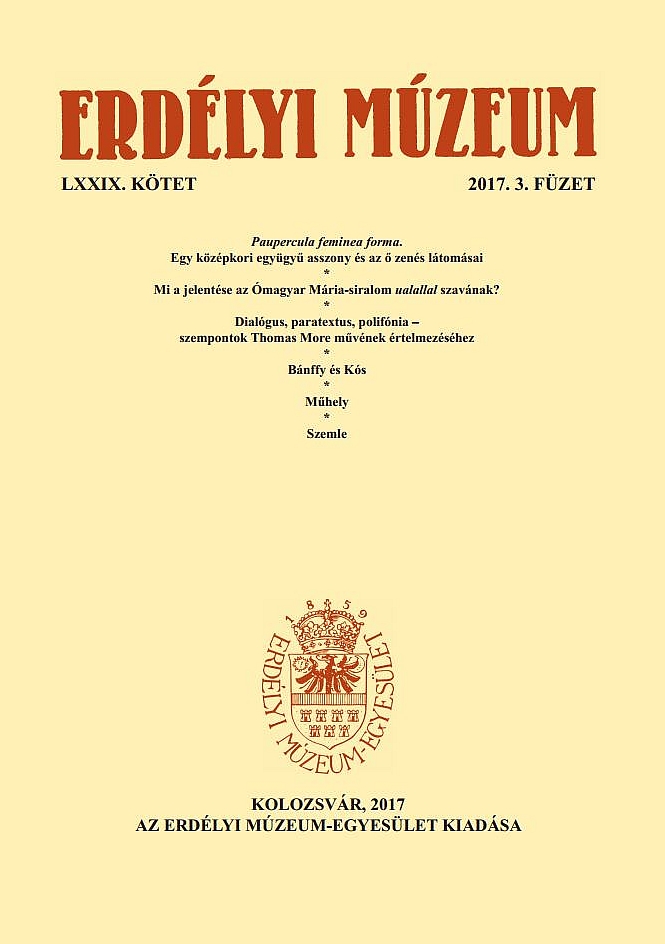Dialógus, paratextus, polifónia – szempontok Thomas More művének értelmezéséhez
Dialogue, Paratext, Polyphony – Points of View for the Interpretation of Thomas More’s Works
Author(s): Csaba MaczelkaSubject(s): Philosophy, Language and Literature Studies
Published by: Erdélyi Múzeum-Egyesület
Keywords: Thomas More; utopia; paratext; dialogue; Unitarian literature
Summary/Abstract: This paper offers a brief look at some of the more recent research trends concerning the interpretation of Thomas More’s masterpiece, the 500-hundred-years old Utopia. First, it reviews the history of the first editions, and in connection with it, discusses the paratextual elements surrounding the text, which reflect the ambivalence so characteristic of the utopian genre (simultaneously reinforcing and questioning the fictional framework). These elements, and especially the verse pieces among them, are characterised by an intense presence of self-reflectivity, which the paper also identifies in the main text. For the text, written in a dialogue form informed by both the Platonic and the Lucianic tradition, reveals – besides the actual topics discussed (best form of state, laws, etc.) – a debate about the genre and methodology of the discussion itself. The discussion of this self-reflexive thread is followed by the question of the Transylvanian-Hungarian reception of Utopia, together with certain aspects of the European transmission. The novel results concerning the regional reception are complemented with considerations for further research.
Journal: Erdélyi Múzeum
- Issue Year: LXXIX/2017
- Issue No: 3
- Page Range: 51-61
- Page Count: 11
- Language: Hungarian

